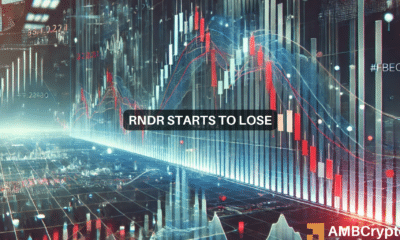How this development impacts investment outlook for Bitcoin, other cryptocurrencies

Digital assets including Bitcoin are a fairly new economical concept and every investment vehicle in the early stages of its inception has been subjected to scrutiny. Bitcoin’s story has been no different and its price implications have been notable for the top coin as well as the larger space.
Recently, however, as Federal Reserve Chairman, Jerome Powell confirmed that the U.S. had no plans to ban Bitcoin and cryptocurrencies, advocates finally let out a sigh of relief. But could Bitcoin and altcoins stay away from the scrutiny of the Feds and continue to grow?
Adoption is key
One of France’s leading banks also recently turned to MakerDAO to propose the submission of bond tokens as collateral for a loan of the DAI stablecoin. The proposal called “Security Tokens Refinancing” is deemed historic by many publications and is labeled as the “first experiment at the crossroads between regulated and open source initiatives.”
While such developments are key for the sectoral growth of the space, there have also been institutional developments that have further fueled the narrative of the growth of the blockchain and Bitcoin. In this light, a report noted that Blockchain start-ups had raised a record $4.38 billion in the second quarter itself.
But, that wasn’t all many of the top companies in the world were experimenting and working with blockchain technologies as highlighted by a CoinMarketCap report. The list included names like Microsoft Corporation, Alphabet Inc, Saudi Aramco, Amazon, and Facebook. Thus, seemingly on the adoption front, blockchain tech and cryptocurrencies seemed to be on track. That along with it, the US SEC’s approval of Bitcoin ETF could prove to be a gamechanger.
Inflation hedge
Apart from adoption, Bitcoin’s narrative as an inflation hedge has also pumped its case as a traditional asset class. In a recent interview, Powell claimed that inflation in the country is due to the “oft-repeated supply chain crises caused by the Government’s pandemic response.”
However, the monetary base of the U.S dollar is $20 trillion while BTC’s was around $990 billion, at press time. So, before BTC can make for an effective bet against inflation BTC is expected to match the U.S dollar, its market cap has to reach at least half of the dollar.
Now, even though sell-offs caused a decrease in AUM for digital asset investment products, a rise in volumes in September coupled with positive weekly inflows for the first time in 3 months suggested that there could be an upside going into the last quarter of 2021.
So with these developments in place, the coming months look bright for the space at least in terms of institutional growth and acceptance from regulatory bodies. Further, with consumer spending increasing by 0.8% in August and savings rate falling by 9.4% in the US consumers could turn towards BTC and altcoins.






